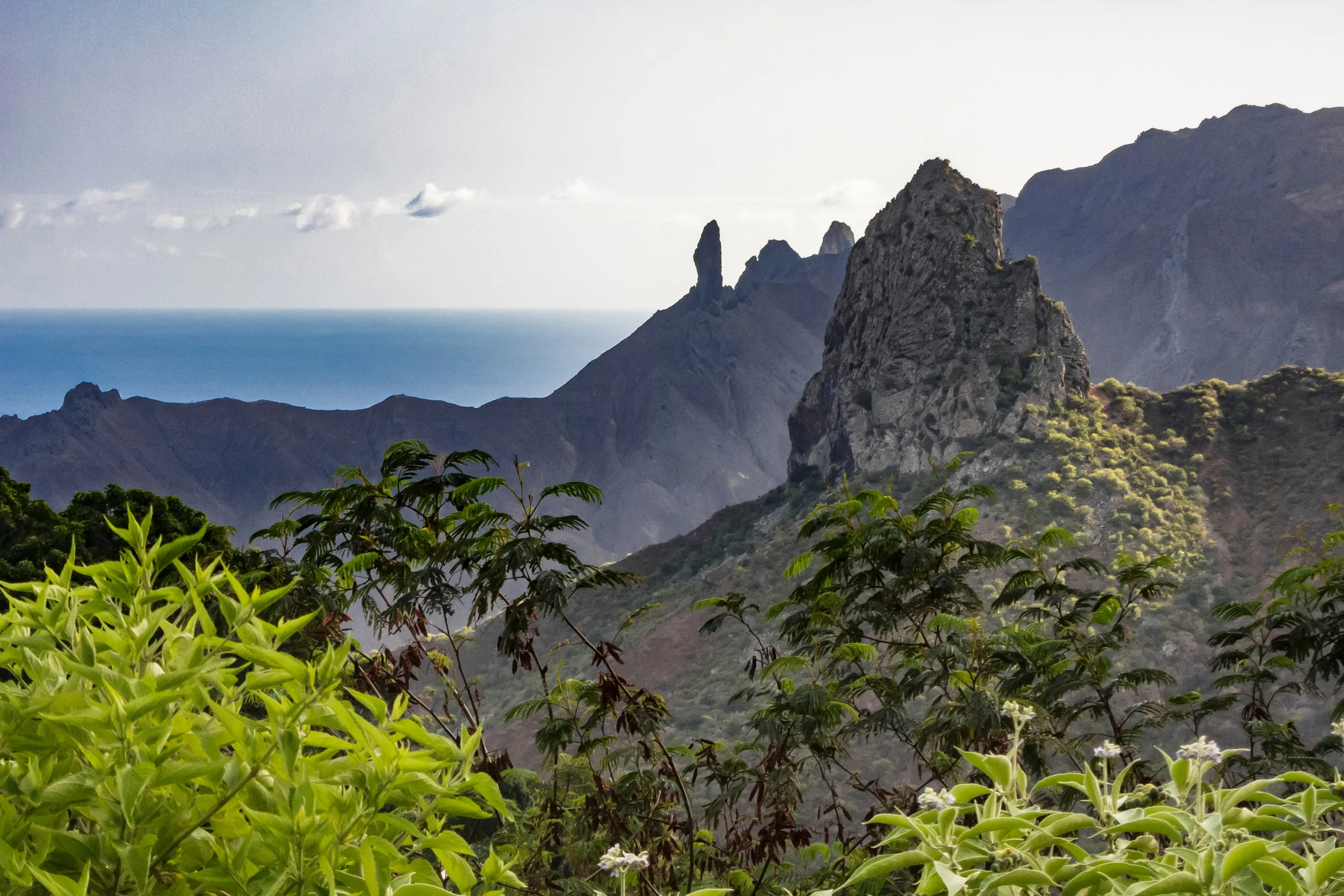Light up a cloud forest
In the middle of the South Atlantic, cut off from the rest of the planet, is the UK Overseas Territory of St Helena. Here, life has evolved into creatures and plants not found anywhere else on earth. But with the island’s cloud forests becoming more and more fragmented, some of the unique species were heading towards extinction. The community who lives there are now leading the way to protect and restore this unique landscape for nature – and for themselves.

On this page
Nature got weird
You know that person who always lights up the room? In the cloud forests of St Helena that person is a woodlouse. They may give you a prickly first impression, but the Spiky Yellow Woodlouse has a party trick: when the UV lights show, they literally glow.
But they’re not the only incredible creature on the St Helena guestlist. The island is also home to 250 other unusual species which live nowhere else. Blushing Snails? Tick. Golden Spiders? Tick. Daisies the size of trees? You bet.

Human invasion
In 1502 humans discovered St Helena and began living alongside its unique nature. But the Portuguese explorers who settled there also accidentally brought rats and mice as well as goats for meat which all began chomping through much of the plant and animal life. The problems only increased when the British colonised the island in 1659. They began cutting down the trees for timber and planting New Zealand flax, a plant used for making rope for ships, for export.
The scattered pieces of the cloud forest
Today the cloud forest is torn into 120 scattered pieces. Many species have been lost – including seven of the eight unique birds which once lived here. The most recent extinction on UK soil was the St Helena o-Olive Tree which went extinct in 2003.
The mountainous cloud forest is vital for the wildlife but also for the community which lives there today. It is vital for water security. St Helena has suffered three severe droughts in the past decade when the whole island was at risk of running out of water. Most of the island’s fresh water comes from the high peaks, with around 60% of that captured directly from the mist.
The people piecing it back together
Things are changing for the better. On the island is a formidable team battling to save the cloud forest and the plants and animals that call it home. People are doing everything from growing rare seedlings in tubs in their gardens, to lobbying government, to conducting DNA analysis.
The RSPB have been involved since 2018, working with the community and partners on a plan to save and restore the vital cloud forest. Last year the UK Government gave £900,000 to help increase cloud forest by 25% over five years and boost the water supply by a fifth. They have committed a further £2.8m over the next 3 years of the project.
Together the band of nature savers are slowly beginning to bring the cloud forest back, making more space for the unique wildlife that lives there. It is hoped the work will also create important new development opportunities through tourism, education, and conservation job training.

Some of the unique wildlife who live in the cloud forest:
- Spiky Yellow Woodlouse – a woodlouse that glows in the dark under UV light, the only woodlouse on record to have this reaction.
- Golden Sail Spiders – a bright golden spider which has distinctively shaped abdomen like a 'sail'.
- Blushing Snail – there used to be at least 20 snail species on St Helena – now only the blushing snail remains. Its gorgeous luminescent shell ranges in colour from pale amber to golden brown.
- Black Cabbage Tree – a daisy that evolved into a tree – daisy-like flowers still burst into bloom at the ends of the branches in October and November.